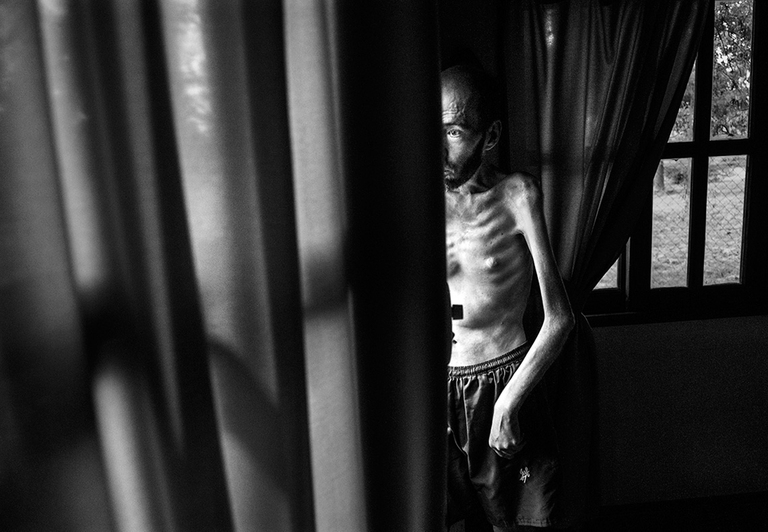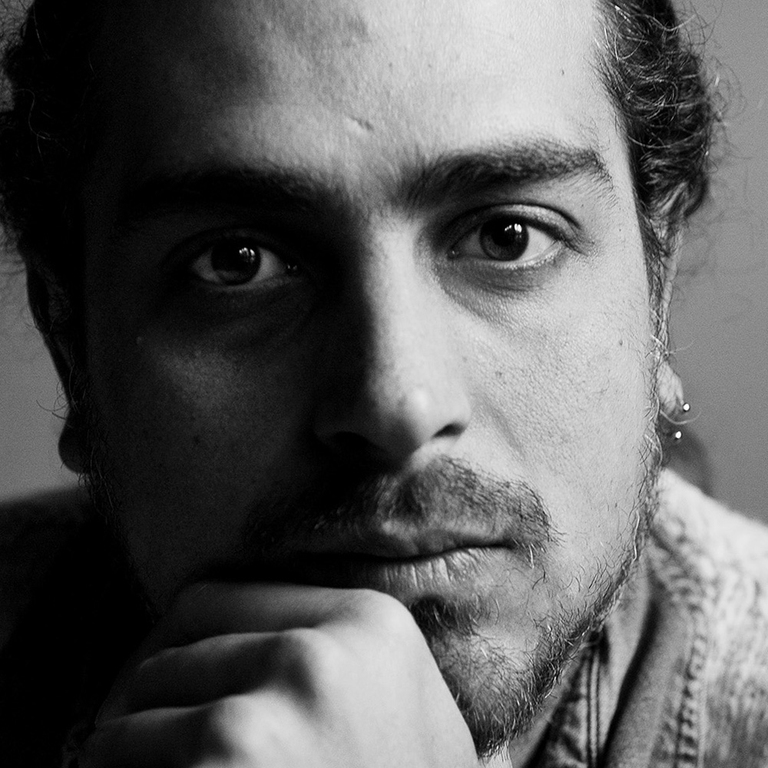
South African court dismisses a major lawsuit by 140,000 Zambian women and children against Anglo American for Kabwe lead poisoning. A setback for affected communities enduring the lasting impact of lead contamination.
L’autore del reportage El costo humano de los agrotóxicos, Pablo Ernesto Piovano, racconta com’è nata l’idea di girare l’Argentina in lungo e in largo alla scoperta degli effetti dei pesticidi sulle persone.
His photo feature El Costo Humano de los Agrotoxicos is dedicated to breaking the silence on the consequences of a growing use of pesticides including glyphosate. It has had an unexpected, relentless echo. To try and answer the numerous questions about this work, LifeGate interviewed its author, Argentinian photographer Pablo Ernesto Piovano.
How did it all start? Why did you decide to document the effects of glyphosate on Argentinians?
Everything started from a deafening silence. Argentinian media weren’t showing the situation in rural areas, where over 370 million litres of agrochemical products are sprayed every year. Several studies and research papers had been published, but none of them included any images. Plus, there was a lack of information about the effects and damage caused by this new way of cultivating. So, I decided to take my camera and go see first-hand what was happening there.
Which was the first case you came across?
I visited Fabian Tomasi, a 40-year-old Argentinian affected by pesticides who is dedicating his life to giving a voice to all the victims. Tomasi lives in Basavilbaso, in the Argentinian province of Entre Ríos, and worked in a pesticide firm, loading and unloading pesticides from airplanes used to spray fields. At that time, the effects these products had on people were unclear, and Tomasi is now a living example of this.
So your work shows the effects of direct contact with pesticides, rather than indirect contact, namely eating “contaminated” foods?
Yes. They’re two separate things. On the one hand there’s exposure to pesticides; on the other there’s indirect contact, that is, through food. And the former is what people who live in villages close to fields sprayed with pesticides face.
How did you find the people and families portrayed in your photographs?
I drove 15,000 kilometres on three separate journeys. Meeting these people wasn’t simple, but by asking around I managed to come into contact with them. For example, I visited centres, home to an alarming number of bedridden children and teenagers. Talking with their families, it was clear that they had had direct contact with pesticides despite a lack of scientific evidence. Only by examining people before and after their contact with chemicals is it possible to provide scientific evidence, and this is quite impossible. However, some studies are showing that if women come into contact with pesticides during the first weeks of pregnancy, the odds of their child developing malformations are higher.
Did you investigate only glyphosate or other pesticides as well?
Working exclusively with glyphosate is almost impossible as farmers use cocktails, mixtures of chemicals. So it’s not about glyphosate only, but other products as well. About 20 million litres of glyphosate and 170 million litres of other chemicals (such as endosulfan, atrazine, cypermethrin, among others) are used every year. These substances are poisonous and hazardous.
How did these substances become widespread across Argentina?
Argentina has been used as a land of experimentation. It has favoured access to these kinds of poisons. In 1996, the government approved the use of glyphosate in haste. It didn’t carry out any research but based its decision on research published by multinationals. So, we’ve witnessed a drastic change in agricultural techniques over the past twenty years. The use of pesticides has increased by 1,000 per cent, while 60 per cent of agricultural lands have been subjected to the use of chemicals. In fact, Argentina currently has one of the world’s highest rates of pesticide use: 6 litres per person.
What do you think about the contrasting theses regarding the carcinogenicity of glyphosate? Now even the World Health Organisation appears to have taken a step back…
The WHO said glyphosate was “probably carcinogenic” in 2015, which was merely a confirmation of what the scientific community already knew. Now that glyphosate has to be relicensed in the European Union, it has decided to take a step backwards. How come the International Agency for Research on Cancer (IARC) – which is part of the World Health Organisation – retracts something it earlier claimed? How reliable does the WHO demonstrate it is?
What kind of scientific sources did you use for your reportage?
I worked with a network of doctors, Médicos de pueblo fumigados, which operates in the areas where pesticides are employed. Moreover, the doctors of the University of Cordoba and the University of Rosario conducted several studies thanks to students’ and professors’ efforts. According to data, the cases of cancer appear to be two to three times higher than the national average. Generally, providing scientific evidence is hard work, because research that isn’t supported by the government is hardly recognised as official. In fact, most of the studies are carried out independently or are the work of volunteers. For example, the Universidad de la Plata, Buenos Aires, carried out a study by – randomly – purchasing fruit and vegetables in local shops, finding that 2 to 16 types of pesticides were contained in 70-80 per cent of food.
Did something change as a result of the publication of your work? Did the government do anything?
No, the situation is even worse than before. At the end of 2015, when Mauricio Macri was elected president, former managers and CEOs of multinationals were appointed to important positions in government. For example, Leonardo Sarquís, former manager of Monsanto, is now the head of agricultural resources of the Province of Buenos Aires. I think the only solution is grass-roots action. People must go back to respecting Mother Earth.
Did someone threaten you whilst you were conducting your work?
No. Fortunately, nobody intimidated me. But I decided not to publish my work in Argentina.
Are you planning to carry out similar photo features in other countries?
My idea is to carry out a photo feature for each continent. However, I don’t have the funds to do so at the moment. My work tries to recover the ancestral memory of our relationship with the Earth. Food has become a mere consumer product, but it’s something sacred, that nourishes us and gives us vital energy. Recovering this awareness is essential.
Siamo anche su WhatsApp. Segui il canale ufficiale LifeGate per restare aggiornata, aggiornato sulle ultime notizie e sulle nostre attività.
![]()
Quest'opera è distribuita con Licenza Creative Commons Attribuzione - Non commerciale - Non opere derivate 4.0 Internazionale.
South African court dismisses a major lawsuit by 140,000 Zambian women and children against Anglo American for Kabwe lead poisoning. A setback for affected communities enduring the lasting impact of lead contamination.
Controversial African land deals by Blue Carbon face skepticism regarding their environmental impact and doubts about the company’s track record, raising concerns about potential divergence from authentic environmental initiatives.
Majuli, the world’s largest river island in Assam State of India is quickly disappearing into the Brahmaputra river due to soil erosion.
Food imported into the EU aren’t subject to the same production standards as European food. The introduction of mirror clauses would ensure reciprocity while also encouraging the agroecological transition.
Sikkim is a hilly State in north-east India. Surrounded by villages that attracts outsiders thanks to its soothing calmness and natural beauty.
Sikkim, one of the smallest states in India has made it mandatory for new mothers to plant saplings and protect them like their children to save environment
Chilekwa Mumba is a Zambian is an environmental activist and community organizer. He is known for having organized a successful lawsuit against UK-based mining companies.
What led to the Fukushima water release, and what are the impacts of one of the most controversial decisions of the post-nuclear disaster clean-up effort?
Nzambi Matee is a Kenyan engineer who produces sustainable low-cost construction materials made of recycled plastic waste with the aim of addressing plastic pollution and affordable housing.









